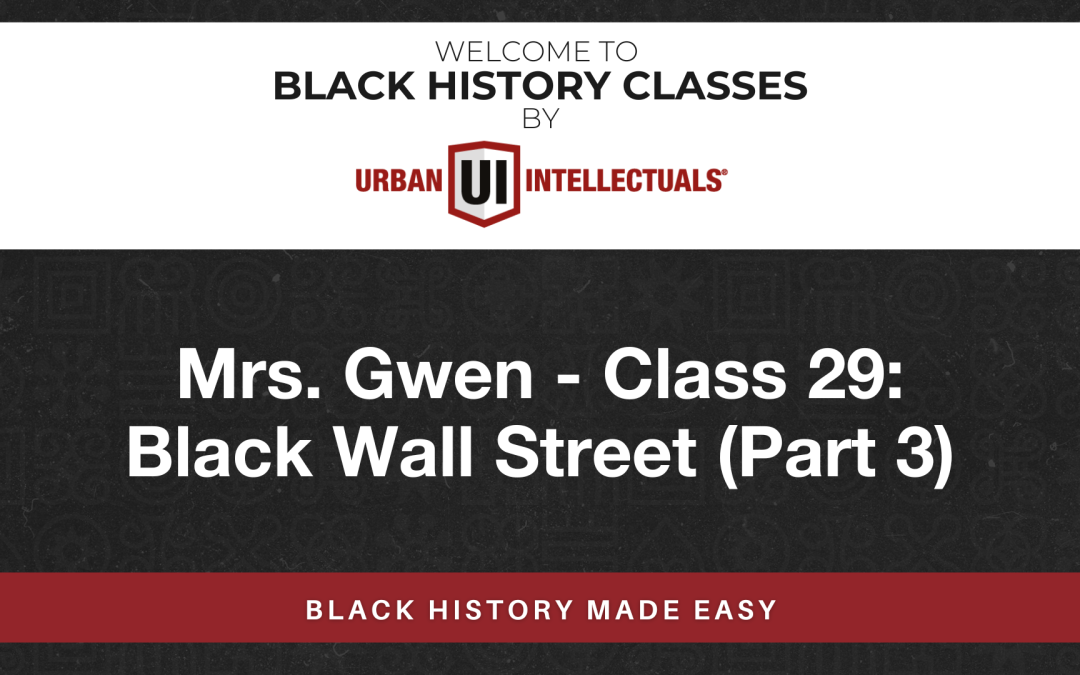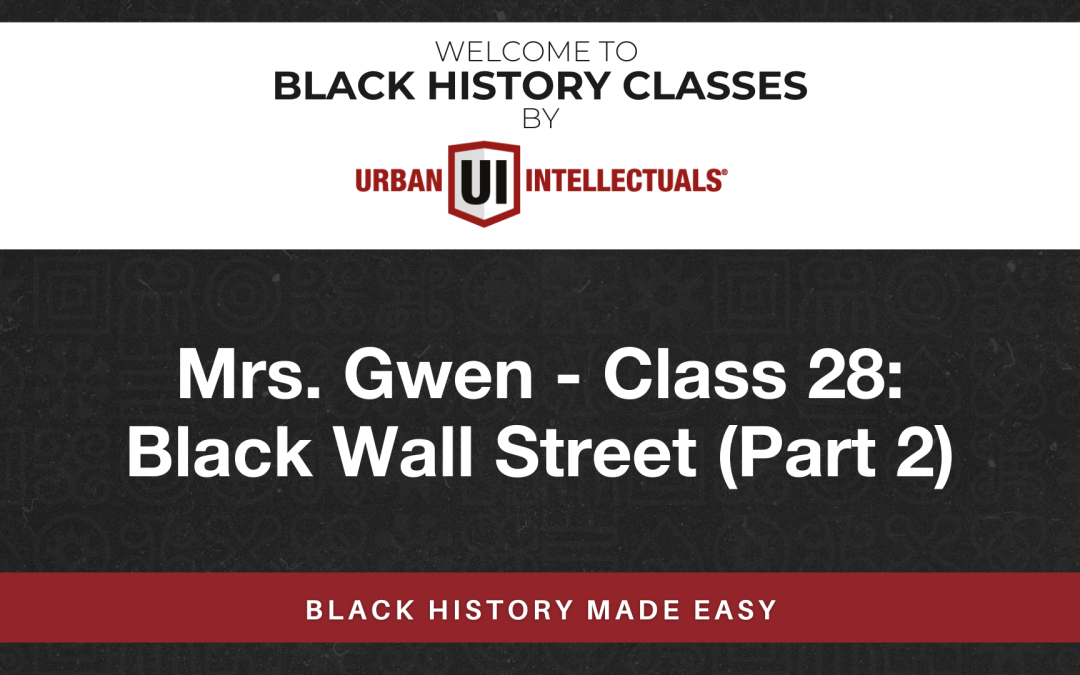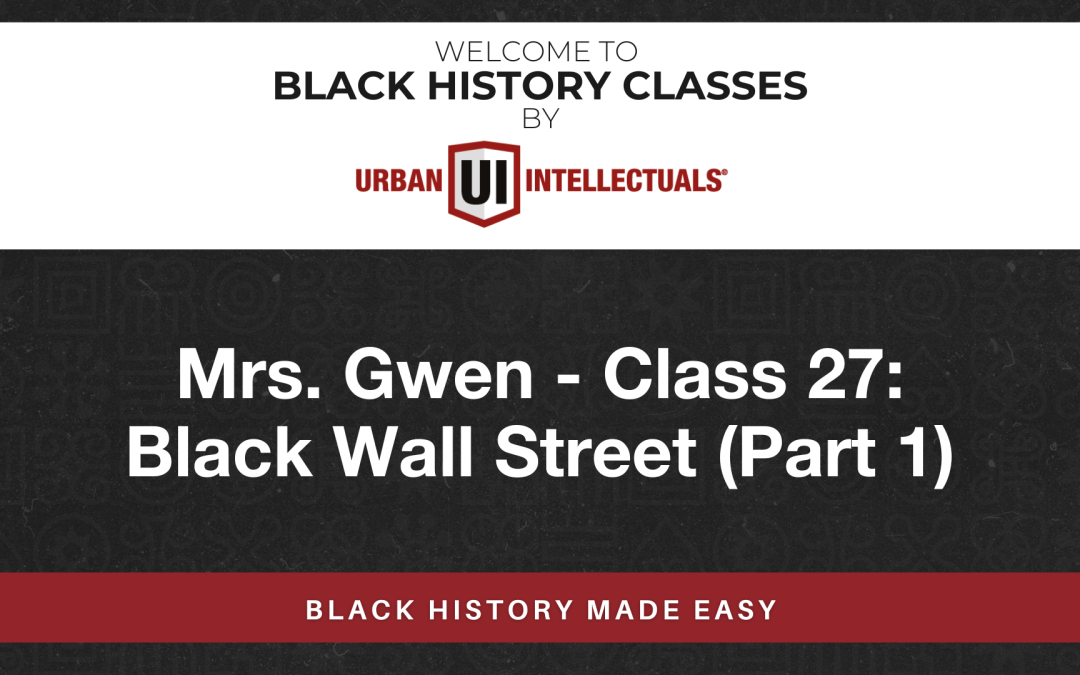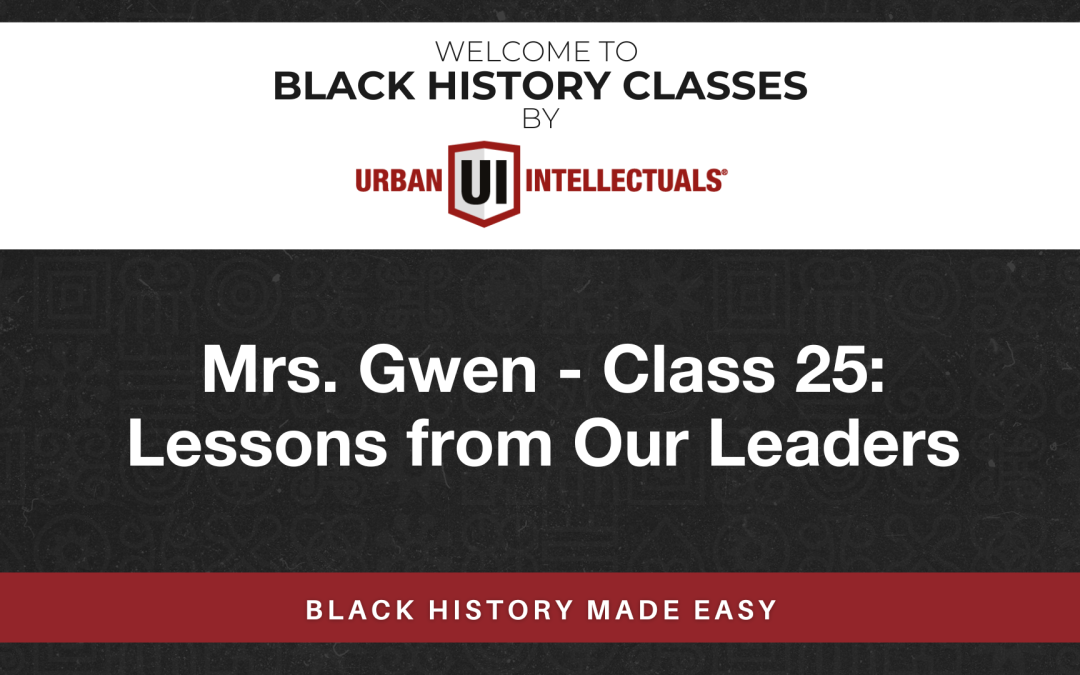
Class 29: Black Wall Street (Part 3)
CLASS OVERVIEW
Learn about the many stores and entities that existed on Greenwood Ave. Known as Black Wall Street.
BEFORE YOU GET STARTED:
- Please check the materials that go with this lesson and print relevant materials.
- Also, check out the books and products the teachers use for further learning.
- Reach out to support@urbanintellectuals.com if you have any questions or issues.
- Some links may be affiliate links where we may earn a small commission from purchases.
Study Guide
These are some of the businesses of Black Wall Street.
1. All stores were on deep Greenwood Avenue.
2. Stratford Hotel with 55 rooms – largest Black owned hotel in the nation.
3. Grocery Store, selling fruits and vegetables and lots of food.
4. Meat Store with beef, pork, chicken and other meats.
5. Clothing Emporium
6. Dry Good Store selling dried fruits and nuts
7. Billiards
8. Beauty Parlor – ladies getting their hair done.
9. Barber Shop – men talking about the politics of the day.
10. Drugstore – with soda fountain
11. William Anderson’s Jewelry Store – fine jewelry
12. Upholstery Store – Upholstery for Hotel and home
13. Photography Shop – many pictures of Families
14. Elliot and Hooker Clothing Emporium – department store selling men’s and women’s clothing
15. H. L. Buyers Tailor Shop – Fitting Clothing
16. Hope Watson’s Cleaners – clothes cleaning
17. Late Night Sandwich Shop – tasty sandwiches
18. The Bar B Que Joint – all barbeque meats and sides.
19. Doc Bennies and the Hamburger Kelly’s Place – hamburgers.
20. Little Cafe – fried Chicken and smothered steak
21. Lily John’s Liberty Cafe – good food
22. Rally’s and Ada House Confectionery with red and black licorice and chocolates, other candies.
23. John and Lula Williams’s Dreamland Theater which seated 750 people showed the movie of the “Idol Class” with Charlie Chaplin and “Camille” by Alexander Dumas a Black French writer who wrote “The Three Musketeers,” and “The Count of Monte Cristo.”
Dr. A. C. Jackson was known to be the most able-bodied Negro surgeon in the United States. He had an office in the office buildings on Black Wall Street. There were also libraries, a hospital, a bus service, funeral homes, a post office, bank and two airplanes. There were schools and churches one of which was newly completed in April of 1921.
This is just a glimpse of the bustling, wealthy Black Wall Street district on Greenwood Avenue.
THE QUIZ
- Oklahoma was a TERRITORY before it was a state.
- O. W. Gurley was born on December 25th 1867.
- Gurley had a GENERAL STORE for 10 years.
- Gurley bought 40 acres of land which was sold only to COLOREDS.
- GURLEY BOUGHT 80 more acres of land and gave loans to people who wanted to start their own BUSINESSES.










